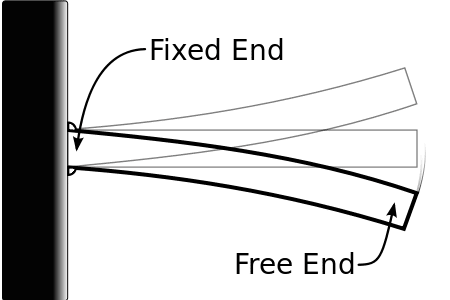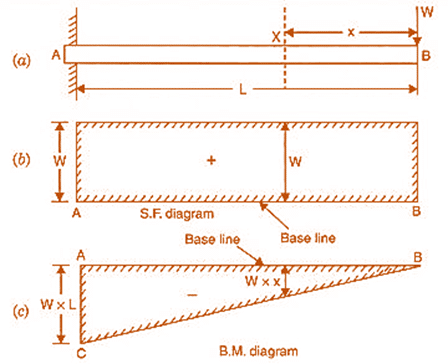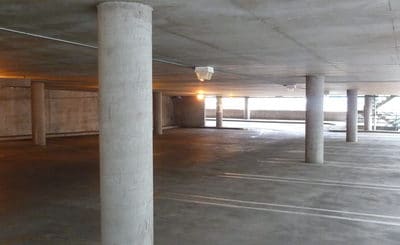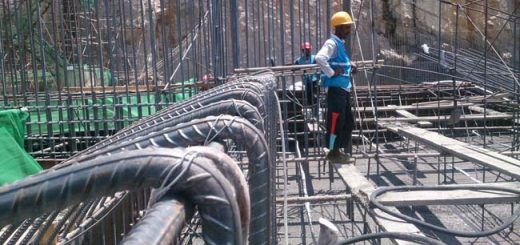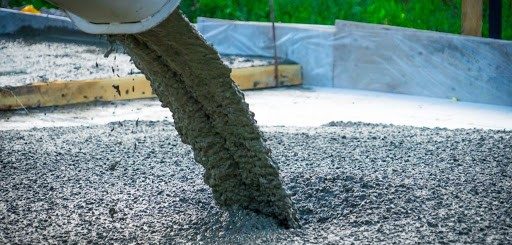Cantilever Beam – Design and Construction Aspects
There seems to be no structure without a cantilever beam. Buildings, bridges, and other most of the structures cantilever beam can be observed.
Design and construction of the cantilevers required more attention when compared to the construction of the normal beam that supports at both ends.
What is Cantilever Beam
The cantilever beam is a type of beam projected out from the main structure or any restrain. The restrain could be another beam, column, wall, or any other element.
There is only one end of the beam is supported and another end is free to move. There are could be lateral restrains to the cantilever in the form of a slab, deck, or secondary beam.
Where We Need Cantilevers
Cantilevers are projections from the main structure. Projections are made to extend the structure from the support. For example, a cantilever slab could be considered. It is done to get an additional area for the building. Apart from that, it could be done as canopy slabs.
Further, the cantilever balances the inner rotation by rotating outside. Therefore, adding a cantilever does not make many changes to the structure when it is smaller.
Cantilevers are also constructed to connect one structure to another. This is done in the bridges. Extensions of the structure are also done with cantilevers.
Structural Behavior of the Cantilever
The structural behavior of the cantilever is not the same as the type of beams. Having a free end at one edge, allows the beam to deflect freely.
When loads are applied on the cantilever, the highest deflection will be at the fee end and the higher rotation is also at the free end. At the support of the cantilever, there could be some rotation. It depends on the stiffness of the restrain or support of the cantilever.
In the ideal condition, there will be no ration in at the support when the beam is supported on a fixed support.
Bending and Shear Force Development in Cantilever
A cantilever beam could be loaded with a uniformly distributed load or by point load. The bending and shear forces calculations of the beam are not the same in each case.
The following figure indicates the cantilever applied with a point load at the end.
Calculation of Bending and Shear Force When Point Load Applied at End
The maximum bending moment and shear forces can be calculated as follows.
Bending Moment = L x W
Shear Force = W
Calculation of Bending and Shear Force When Uniformly Distributed Load is Applied
Bending Moment = (wxL) x L /2 = wL2/2
Shear Force = wL
Design of Cantilever Beam
After evaluating the loads applied to the beam, bending and shear forces can be calculated from the equations given in the above equations.
Once the bending moment and shear forces are found, reinforcement can be calculated. One of the most important aspects of the design of cantilevers is the design for the deflections. Higher deflections of the cantilever could lead to the development of cracks in the structure and it could affect the durability of the structure.
In addition, it may affect other nonstructural components. Excessive deflection could lead to damage to the ceilings, cracking in the walls, damages to the partitions, glass facades, etc.
Some important aspects of the design are as follows.
- In addition to the loads applied on the cantilever from the general loads, construction loads shall also be considered.
- Where required, cantilevers could be supported when construction loads are applied.
- Calculation of bending moments, shear forces, and deflections are not the same with respect to the design standards. There are different methods for desing.
- Further, it should be noted that the method of calculating the deflection of the cantilever beam constructed from the concrete and steel is not the same.
How Long Cantilevers are Made
Theoretically, there are no limits for a cantilever. We can make any load if it is permitted to increase the depth of the beam. The following factors are considered when limiting the length of the cantilever.
- The actual requirement of the beam projection from the structure.
- The affordable cost of construction. The longer the cantilever is higher the cost of construction.
- Deletion limitations. When there are limitations for deflections, the length of the cantilever could be limited or the depth of the section may be increased. In addition, an increase in the reinforcement up to a certain level can also be done to reduce the deflection.
Behavior of Cantilevers with Seismic Loads
Cantilevers are very critical when structures are built-in seismic zones. A cantilever can cause dynamic excitation when cyclic loads are applied.
Not like other beams supported with both ends, having a cantilever in a structure is not suitable from a seismic design point of view. However, on many occasions, we cannot avoid cantilevers. For example, in accommodations, do get more space and space connected to outside we construct cantilevers.
Special attention shall be made when cantilevers are designed.
- A cantilever could move in both upward and downward due to the vertical vibration induced by the earthquake.
- There will be a hogging bending moment at both top and bottom of the beam.
- Therefore, adequate reinforcement shall be provided for both the top and bottom of the beam.
- Adequate shear links shall be provided to maintain the required condiments. This shall be done as per the relevant standards and detailed guidelines.
Reinforcement Detailing of Cantilever Beams
Generally, the hogging reinforcement is critical for the cantilever beams unless there is a requirement for compression reinforcement. Shear links shall be provided as required by the design and the spacing of the links required to be increased close to the support of the cantilever beam.
The top reinforcement is required to continue adequately through the beam to bear the hogging bending moment of the other span. The typical requirement for extending top reinforcement in a beam is 1.5 times the length of the cantilever.
The continuation of the top reinforcement in the other span could be done as per the bending moment diagram and in accordance with reinforcement detailing requirements.
Construction of cantilever Beam
The construction of cantilever beams is not that different from other types of beams. However, when the cantilever beam is constructed on another cantilever beam, we need to be careful.
The supporting beam needs to check for the construction loads. When there is no adequate reinforcement to carry the construction loads, the cantilever shall be supported with props.
Advantages of Cantilever Beam
- It can be used to extend the structure
- They are used to link one structure to another.
- The cantilever is used to have a better aesthetic appearance
Disadvantages of Cantilevers
- Additional attention is required with cantilevers are designed and constructed
- Special attention is required when a cantilever beam is desing for earthquake loads.
Related Articles on Beams
- Prestressed Composite Beams
- Bridge Beam Design
- Ground Beam Design
- Seismic Detailing of Beams and Columns
- Steel Beam Design Worked Example
- Steel Beam Design as per BS 5950
- Singly Reinforced Beam Design using EC2
- Design of Singly Reinforced Beam
- Beam Design to BS 8110
- Design of Deep Beam
- Shear Design of Beam
- Doubly Reinforced Beam Design to BS 8110
- Beams Shear Design to Eurocode 2
- Beam Side Reinforcements
- Types of Steel Beams
- Types of Beams
- Beam and Slab Deflection
- Moment Redistribution
- Plinth Beams
- Beam Design
- Beam Reinforcement Details
- Concrete Beam
- Curtailment of Beam Reinforcements

